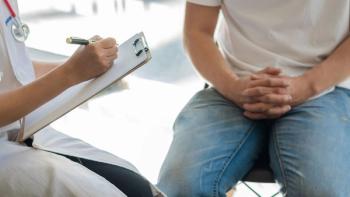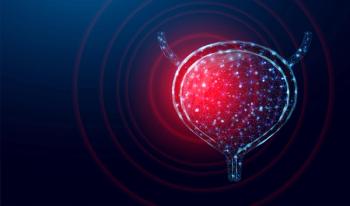
Weighing the Impact of Obesity
Obese women with breast cancer are at higher risk for recurrence and death, but new findings suggest it may depend on cancer subtype.
The research has been pretty clear: Obese women with breast cancer are at higher risk for recurrence and death. But now, new findings suggest the poor outcome for obese patients depends on whether they have the most common subtype—estrogen receptor—positive, HER2-negative breast cancer.
Obese women treated with chemotherapy after surgery had worse overall survival and disease-free survival than non-obese patients—but only if they had estrogen receptor—positive, or hormone-sensitive, cancers. The findings, presented Thursday at the San Antonio Breast Cancer Symposium, are the first to show that obesity’s harmful effects may be confined to this group of patients. Women with other types of breast cancer, however, shouldn’t consider themselves safe just yet, experts caution.
Obese Americans make up a third of the adult population. A person is considered obese if their body mass index—a calculation of body fat that uses weight in relation to height—is 30 or higher. So a 5-foot-5-inch woman would be considered obese at 180 pounds.
Using information from a previous clinical trial, investigators examined the relationship between body mass index and survival in early-stage patients. When researchers teased out the data by breast cancer subtype, they uncovered a trend toward worse survival only among obese women with hormone-sensitive tumors.
Hoping to confirm this finding, the researchers analyzed data from two other studies—one that included patients with estrogen receptor—positive cancers, and a second that comprised estrogen receptor–positive cancers. HER2 status was unknown in these two studies, but, like the first trial, patients had received chemotherapy after surgical removal of the tumor.
Based on combined data from the three studies, obese patients who do not have hormone-sensitive breast cancer appear to be spared the harmful effects of obesity, said lead investigator Joseph Sparano, MD, professor of medicine and women’s health at Albert Einstein College of Medicine and associate chairman of the department of oncology at Montefiore Medical Center in Bronx, New York. The findings, however, would need to be confirmed in other studies that look at all breast cancer subtypes, Sparano noted.
Certainly the (women with ER-positive cancers) are at risk, but I wouldn’t begin to reassure the hormone receptor—negative obese women that they are not at risk. At the end of the day, the risk of obesity on prognosis won’t just be present in hormone receptor–positive patients.
Women with estrogen receptor—positive breast cancer should not feel protected, said Pamela Goodwin, MD, a clinician-scientist at Mount Sinai Hospital in Toronto and an associate professor of medicine at the University of Toronto. “Certainly the (women with ER-positive cancers) are at risk, but I wouldn’t begin to reassure the hormone receptor–negative obese women that they are not at risk,” said Goodwin, who was not involved in the study. “At the end of the day, the risk of obesity on prognosis won’t just be present in hormone receptor–positive patients.”
The most likely explanation for the findings may be that high insulin levels—a byproduct of obesity—are driving the growth of breast tumors, said Goodwin.
Weight control or loss might help put the brakes on cancer growth. But the weight reduction required to get a beneficial effect might not be sufficient, or it might come too late, said Sparano. What’s more likely to do the trick, he suggested, is a therapeutic intervention, such as metformin.
Commonly used in the treatment of type 2 diabetes, metformin lowers the levels of insulin and other hormones, including estrogen, that circulate in the blood. In fact, metformin can reduce insulin levels by almost 25 percent and cut estrogen levels by about 20 percent, experts said. By removing two hormones vital to the cancer’s growth, the disease might be kept at bay.
A phase 3 international study led by Goodwin will compare metformin to placebo in obese and non-obese women with early-stage disease. The trial is set to start in the U.S. early next year, with results expected in six years. Based on his own findings, Sparano theorizes: “I would expect that obese women who have ER-positive, HER2-negative disease may be the particular subgroup of women who would benefit from [metformin].”
Researchers presented two other obesity-related studies in San Antonio. The ADEBAR study evaluated the influence of weight on the effectiveness of chemotherapy for early-stage, node-positive breast cancer. After five years, approximately 70 percent of normal-weight and overweight patients were alive with no signs of disease compared with 59 percent of obese patients.
Investigators also wanted to know whether weight impacted how well hormonal therapy works in postmenopausal women with early-stage, hormone-sensitive breast cancer. The difference in disease-free survival between obese and non-obese women in the TEAM trial, a study comparing tamoxifen and the aromatase inhibitor Aromasin (exemestane), was negligible after five years of treatment. The researchers noted, however, that this finding could change over time.
Nonetheless, the advantages of physical activity and a low-fat diet are evident, most notably in the Women’s Intervention Nutrition Study, which in 2006 showed that a low-fat diet reduced the risk of breast cancer recurrence or a new breast cancer. Goodwin advises women to lose at least 10 pounds or up to 10 percent of their body weight over six months. If a woman can maintain that weight for six months, she suggests trying to lose more.
Although it’s difficult to lose weight, breast cancer may give women the conviction they need to make lifestyle changes, Goodwin said. “You don’t want to make women with breast cancer feel like they caused their disease—or even worse, are causing their own death,” she said. “But by the same token, this is one place where women can possibly take control and make some changes that may impact their outcome.”





